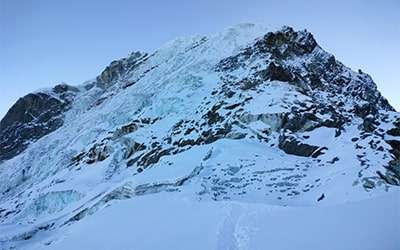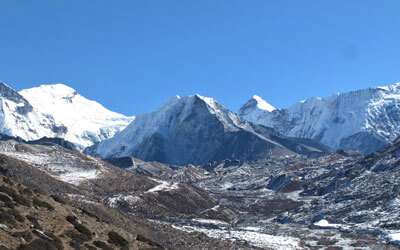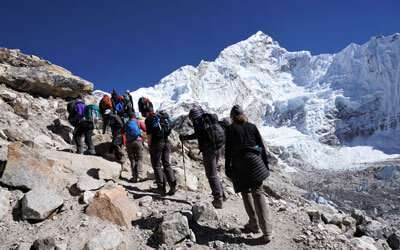To stand on a Himalayan summit with a sense of great achievement, Mera peak climbing trip offers the best opportunity to trekkers and climbers alike who have been seeking the thrill of adventure beyond hiking in Nepal Himalayas. During bygone years Mera Peak trekking was basically organized as Camping Trips. Over the years there has been a radical accommodation amendment in regards to facilitating the trekkers and climbers. This in course brought about the evolution of Basic Lodges or what we so call as tea house trekking. Since Tea house trekking started very recently in the region the facility is pretty BASIC. However, these basic tea houses have efficiently accommodated travelers with absolutely no criticism whatsoever. It is not mandatory that you have prior climbing experience, as this is a non- technical trekking peak climbing in Nepal. In case of heavy snowfall or a maze of crevasses our experienced climbing Sherpas and leader will assist you.
Highest and remote trekking peak climbing with its exceptional beauty from the top.
Among the peaks of Nepal, Mera Peak (6476 meters) is the highest permitted trekking peak. Mera Peak is situated to the south of Everest dominating the watershed of the thickly wooded and remote Hinku valley. Climbing Mera peak boasts a stunning panorama of five of the world's 8000 meters peaks- Kanchenjunga, Makalu, Cho-Oyu, Lhotse and of course Mt. Everest. Mera peak climbing route ascends through the standard northern Mera La after a few days of acclimatization hike of surrounding peaks and climbing clinic sessions briefed and instructed by experienced mountain experts on techniques and use of climbing gears so that you acquire the necessary skills and confidence to summit the Mera peak.



